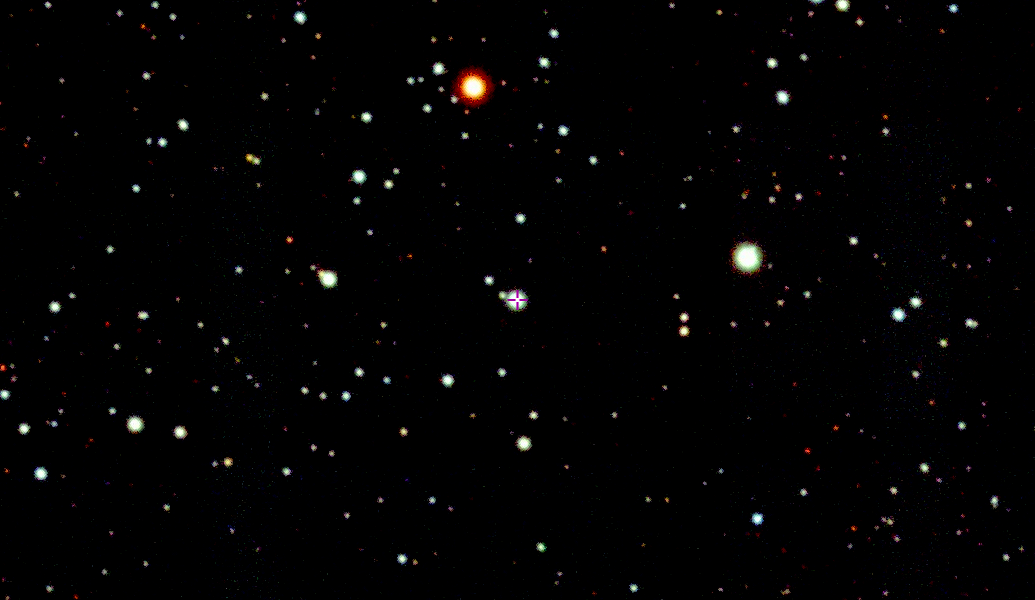Huge, cataclysmic explosion in space explains mystery star, scientists say

Your support helps us to tell the story
From reproductive rights to climate change to Big Tech, The Independent is on the ground when the story is developing. Whether it's investigating the financials of Elon Musk's pro-Trump PAC or producing our latest documentary, 'The A Word', which shines a light on the American women fighting for reproductive rights, we know how important it is to parse out the facts from the messaging.
At such a critical moment in US history, we need reporters on the ground. Your donation allows us to keep sending journalists to speak to both sides of the story.
The Independent is trusted by Americans across the entire political spectrum. And unlike many other quality news outlets, we choose not to lock Americans out of our reporting and analysis with paywalls. We believe quality journalism should be available to everyone, paid for by those who can afford it.
Your support makes all the difference.A massive, violence explosion in space could be the solution to a mystery that has hung over our galaxy for 13 billion years, scientists say.
The entirely new type of huge explosion – known scientifically as a “magnetorotational hypernova” – is the most likely explanation for the unusual composition of another star in our Milky Way, they say.
The blas came from a previously unknown source and would have been about 10 times more energetic than a normal supernova, the scientists suggest.
That star is intriguing in part because it has far more of some metals, such as gold and uranium, than other stars that are of a similar age. Normally, those materials would be expected to form out of neutron star mergers – but that is not enough to explain the copious amount of metals.
Instead, the researchers propose that there is a previously unknown kind of violent collapse that can happen to a very early star, and help provide all of the neutrons required for those metals.
That explosion would have been amplified by the star spinning quickly and having a strong magnetic field, the researchers suggest.
The blast would have happened in the early days of the universe, barely a billion years after the Big Bang, scientists said.
The new kind of explosion is described in a breakthrough paper, titled ‘r-Process elements from magnetorotational hypernovae’ and published today in Nature.
“The extra amounts of these elements had to come from somewhere,” said Chiaki Kobayashi from the University of Hertfordshire.
“We now find the observational evidence for the first time directly indicating that there was a different kind of hypernova producing all stable elements in the periodic table at once – a core-collapse explosion of a fast-spinning strongly-magnetized massive star. It is the only thing that explains the results.”
Despite the large amount of those heavier metals, scientists found that the star is otherwise lacking in metals, making its composition even more intriguing. The star is extremely ancient, described as primitive by researchers, and known scientifically as “SMSS J200322.54-114203.3”.
“The star we’re looking at has an iron-to-hydrogen ratio about 3000 times lower than the Sun - which means it is a very rare: what we call an extremely metal-poor star,” said David Yong, the Australian National University scientist who led the research.
“However, the fact that it contains much larger than expected amounts of some heavier elements means that it is even rarer - a real needle in a haystack.”
Scientists have known about hypernovae since the 1990s. But the new blast is the first known that would also be spinning quickly and have such strong magnetic forces.
“It’s an explosive death for the star,” said Dr Yong in a statement. “We calculate that 13 billion-years ago J200322.54-114203.3 formed out of a chemical soup that contained the remains of this type of hypernova. No one’s ever found this phenomenon before.”
The star lies about 7,500 light years from us, and sits in the halo of the Milky Way. It was examined with a set of telescopes to first learn its metal-poor composition and then give the extra information to confirm that it served as evidence of the “magnetorotational hypernovae”.
Join our commenting forum
Join thought-provoking conversations, follow other Independent readers and see their replies
Comments